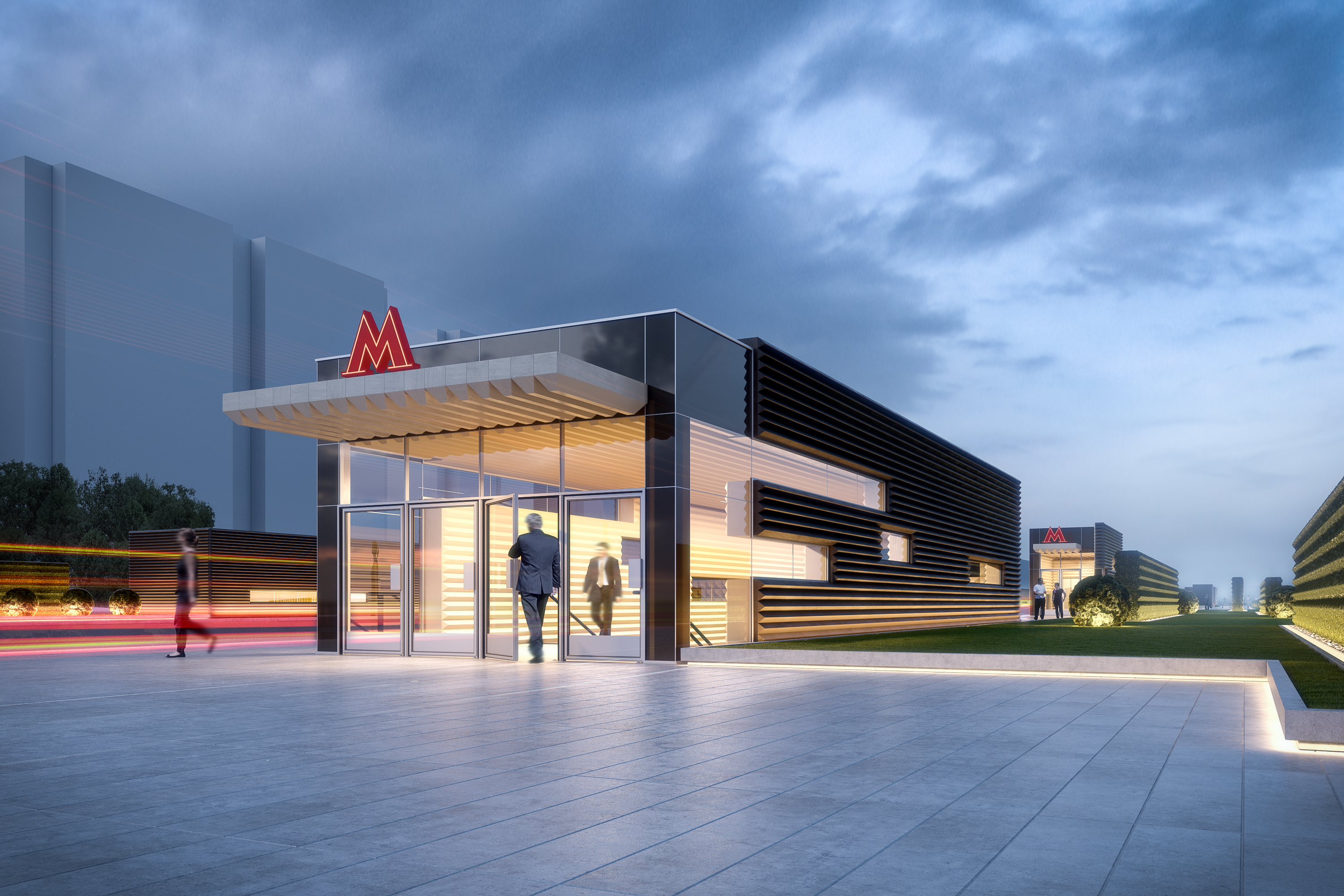Centers of Gravity, not Black Holes: Experts Discuss New Moscow Metro Stations

In 2015 Moscow will see a wide range of new capital transportation facilities, and their design is just as important. We asked four jury members of the recent design competition for metro stations Solntsevo and Novoperedelkino to tell us more about this aspect.
.jpg)
Black holes and teleports
 Erken Kagarov, Vice President of The Academy of the Graphic Design, art director of “Art. Lebedev Studio”:
Erken Kagarov, Vice President of The Academy of the Graphic Design, art director of “Art. Lebedev Studio”:
“Being a designer, first of all I did my best to evaluate the visual aspect of the offered solutions. Besides that it was important for me to see something new and original. Otherwise, why bother organizing a competition?
As for the results of the contest, I am under the impression that we tried to get everything at once, and that was a mistake. The winning projects are quite expressive and not too expensive. Unfortunately, they are not at all ground-breaking. If we take a look at the history of Moscow metro and the work of one of its best creators, Alexey Dushkin, we’ll see that he was constantly inventing and reinventing certain techniques and materials: he was the first one to use stainless steel to decorate Mayakovskaya, he came up with the idea of columns lit from below for Kropotkinskaya, he put up stained-glass panels underground, where the sun doesn’t ever shine, on Novokuznetskaya.
.jpg)
.jpg)
It’s traditional for Moscow metro to be looking for eye-catching, innovative solutions like those, and I felt the lack of them in the competition. The only project that had something was the one submitted by Fas(t). With metro being a rather conservative place, any innovation would have made quite a splash. Moscow de facto consists of ‚islands‘, or ‚planets‘, surrounding metro stations. One enters the black hole and teleports to the next portal that leads to another planet.
I believe that metro needs to stop being a funnel and start connecting not only different parts of the city, but also the people who live in them. Metro stations should become the modern alternative to the medieval market square.”
The city needs comprehensive solutions
 Alexei Muratov, Partner at KB Strelka, Head of “Territorial development strategy” direction:
Alexei Muratov, Partner at KB Strelka, Head of “Territorial development strategy” direction:
“It’s really a shame that the competition was only for the design of the stations. It would have been much more interesting to ask the participants to reflect on the development of the territories surrounding the stations and to consider their integration into the existing environment and transportation infrastructure.
.jpg)
As for the pitched design projects, I think they happened to be quite worthy. If they are implemented, the resulting stations will be interesting and not at all plain. Both winning concepts are very different but fully compliant with the international trends. It is common practice to see underground stations as public spaces in their own right, which have to be artistically appealing to a certain degree. This trend is nothing new for the Moscow metro’s traditions. You can say that we were pioneers in the field, and the competition only confirmed that when it comes to that, we are still quite ambitious.
However, further development of Moscow metro depends not on the aesthetic preferences but on the financial possibilities. If we’re short of money, pure and simple functionality will prevail.
.jpg)

Solntsevo and Novoperedelkino districts were created in times of active development of free lands, when residential building was pretty much oblivious to the infrastructure. Now the situation is different, the pace of construction is much slower, and the city has a chance to level the occurred imbalance. In order to achieve that we need consistent and comprehensive solutions. Unfortunately, when it comes to the development, the city lacks an integrated policy. Each city department only deals with isolated issues; the interaction mechanisms are virtually non-existent.”
Contests like that should attract the very best
 Andrei Gnezdilov, Chief Architect of the Research and Project Institute of Moscow City Master Plan:
Andrei Gnezdilov, Chief Architect of the Research and Project Institute of Moscow City Master Plan:
“Overall I wouldn’t give a high rating to the submitted projects. After the first stage was over, it seemed that we might expect some interesting and promising solutions. But by the second stage the pitches somehow became weaker. Nevertheless I was happy to see such a big interest in the contest. Seeing the designs was exciting. A metro station is defined not only by its interior, but by the ground lobbies as well. The authors’ response to the architectural and urban context was important.
.jpg)
I think I would have been able to abandon the strict evaluation criteria if I saw a really powerful project, but that didn’t happen. The situation with the remote residential districts is quite hard. For many years the residential development there got ahead of the transport development, and we are still coping with that. I see the desire to synchronize the city’s infrastructure development processes manifested in certain attempts, but the system is very inert and unwilling to yield. Before we solve the existing problems, we can’t think of advancing.
.jpg)
It’s obvious that we need complex transport hubs. We also need to aim to please the end customer and to care about their comfort. We’ve seen some positive changes, but not enough due to the lack of money and tight schedule. These factors are what prevent top architects from participating in the competitions like that. I think we need to enhance the prestige of our contests and to attract the very best. We should work on that.”
Moscow metro is a brand
 Vasily Tsereteli, Executive Director of Moscow Museum of Modern Art:
Vasily Tsereteli, Executive Director of Moscow Museum of Modern Art:
“It’s a pity that the competition coincided with the construction works and was only dedicated to the stations’ design. Metro is one of the most important transportation structures of any city. It remains the quickest one, too, and as such must be developed further.

Our stations are the most beautiful in the world, and as big a brand as the Kremlin. Every new station should continue that tradition. However, unlike the Soviet times when it was an instrument of propaganda, metro is, first of all, a comfortable and convenient transport. And that makes perfect sense.”
- Tags:
- metro and transport





